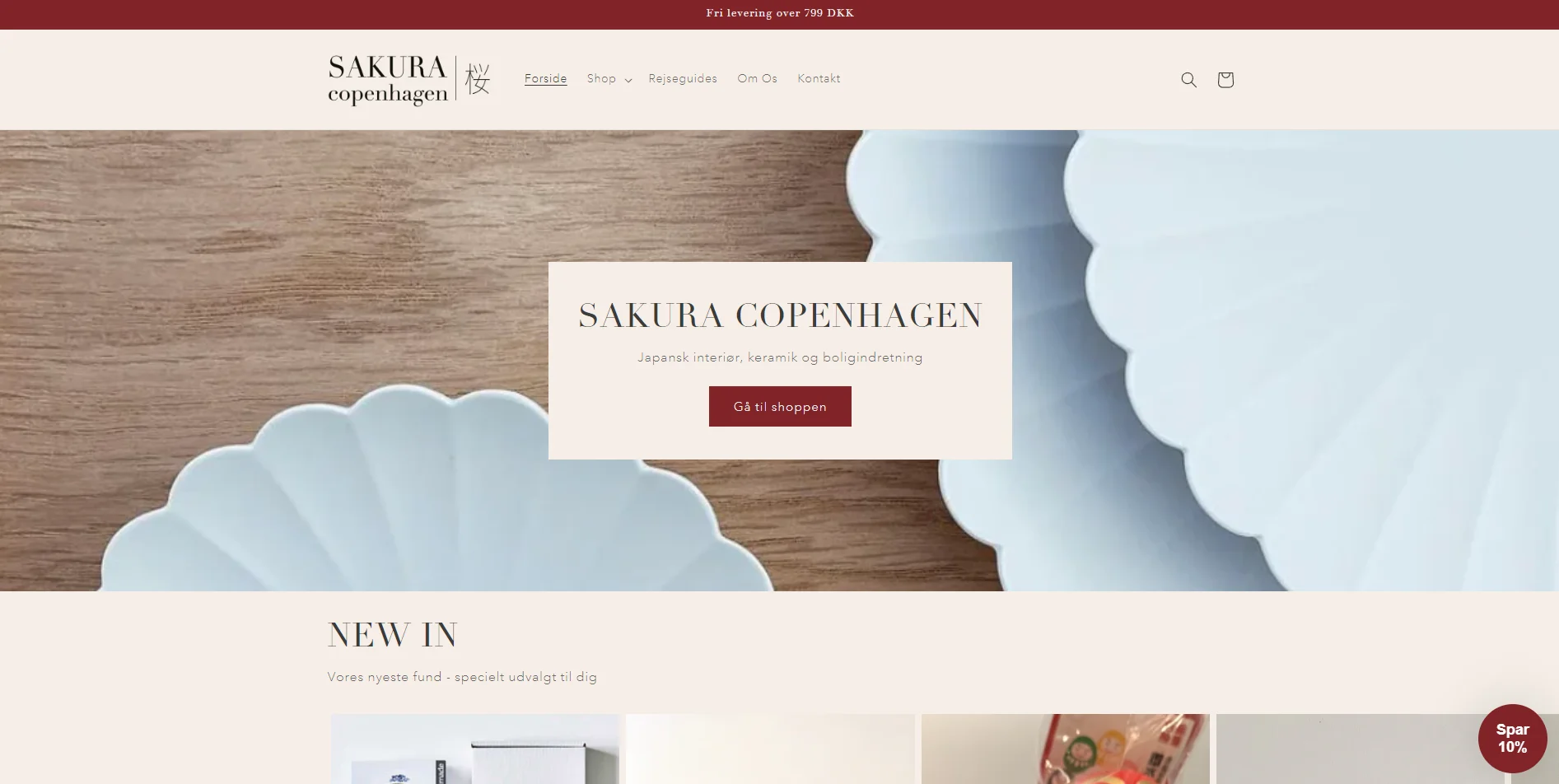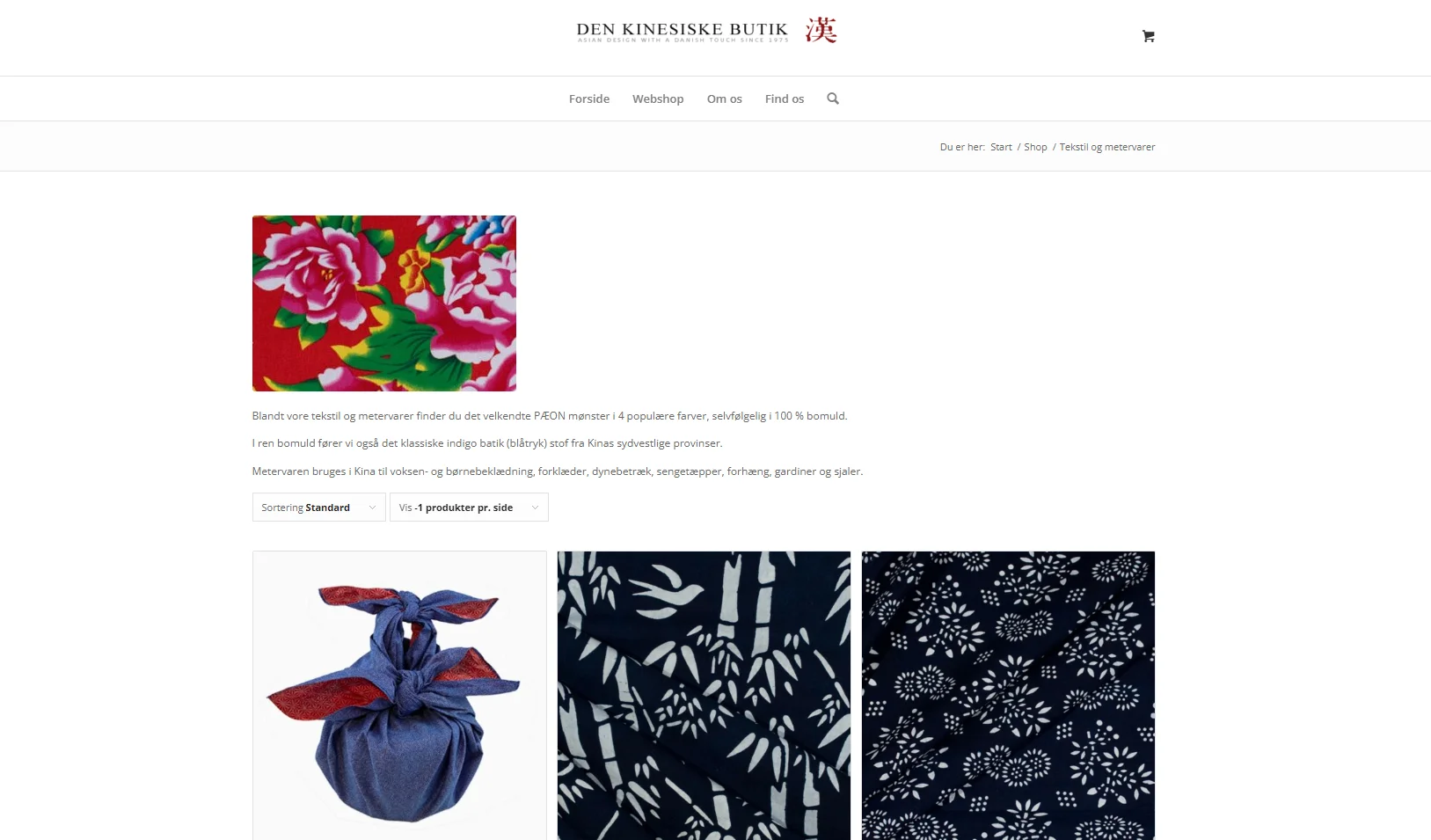Key Challenges and Benefits for Asian Businesses in the Nordics
Last Updated on 7. Jan 2025 by b2bexport
Expanding into new markets is an exciting yet daunting venture for any business, especially for Asian businesses in the Nordics, where distinct cultural, regulatory, and economic landscapes create unique challenges.
For Asian businesses eyeing the Nordic markets of Denmark, Sweden, Norway, and Finland, the journey is filled with both unique challenges and promising opportunities. In this article, we will delve into the primary obstacles Asian businesses might face when localizing their products and services for the five Nordic countries. Alongside these challenges, we will offer insights and strategies to help navigate and overcome these hurdles effectively.
Understanding the Nordic Region
The Nordic region, consisting of Denmark, Norway, Sweden, Finland, and Iceland, is renowned for its high standards of living, robust economies, and advanced technological infrastructure. These five Nordic countries share a rich cultural heritage and are often celebrated for their commitment to social welfare and environmental sustainability.

Regulatory Frameworks
One of the first hurdles Asian businesses may encounter is navigating the intricate regulatory frameworks of the Nordic countries.
Each Nordic country has its own set of regulations and compliance standards, which can be complex and demanding. For instance, the European Union regulations heavily influence Denmark, Sweden, and Finland, while Norway, though not an EU member, aligns closely with many EU standards due to its membership in the European Economic Area (EEA).

Cultural Considerations
Cultural differences pose another significant challenge.
Understanding the Nordic model of governance and business practices is crucial. The Nordic countries are known for their egalitarian societies, transparency, and emphasis on work-life balance. Businesses must adapt their strategies to resonate with local values and norms.
For example, in Denmark, Norway, and Sweden, there is a strong emphasis on consensus and collaboration, which might differ from the hierarchical structures prevalent in many Asian companies.

Language Barriers
Language can also be a barrier.
While English is widely spoken across the Nordic region, having marketing materials and customer support available in local languages (Danish, Norwegian, Swedish, Finnish, and Icelandic) can significantly enhance customer trust and satisfaction. Understanding North Germanic languages is particularly important when dealing with Denmark, Norway, and Sweden.

Market Entry Strategies
Crafting a compelling marketing strategy tailored to the Nordic countries is essential.
Highlighting sustainability practices can be particularly effective, given the Nordic governments’ strong focus on environmental responsibility. Additionally, leveraging the region’s high digital penetration rates by utilizing mobile platforms and social media can provide a competitive edge.

Case Study: Mobile Phone Industry
A notable example is the mobile phone industry.
Companies like Samsung and Huawei have successfully entered the Nordic markets by offering innovative products that align with local preferences for high-quality, durable, and environmentally friendly technology.

Geographical and Demographic Insights
The Nordic region is characterized by diverse geographical and demographic features.
From the densely populated urban centers of Sweden and Denmark to the sparsely populated rural areas of Norway and Iceland, businesses must tailor their strategies to suit different market segments. Understanding the population density and regional demographics is crucial for effective market penetration.

Economic Opportunities
The Nordic region offers numerous economic opportunities.
With high GDP per capita and strong purchasing power, the Nordic countries present a lucrative market for Asian businesses. Moreover, the region’s strategic location in Northern Europe and its connectivity to the North Atlantic and Baltic Sea enhance its appeal as a gateway to other European countries.

Leveraging the Nordic Council and Nordic Co-operation
Asian businesses can benefit from the initiatives of the Nordic Council and Nordic Co-operation.
These organizations promote economic collaboration and provide resources to facilitate business operations across the region. Engaging with these bodies can offer valuable insights and support for navigating the Nordic markets

Understanding the Regulatory Landscape of the Nordic Council
One of the first hurdles Asian businesses must overcome is the complex regulatory environment in the Nordic region.
Each Nordic country—Denmark, Norway, Sweden, Finland, and Iceland—has its own set of rules and standards, particularly regarding product safety, environmental impact, and labor laws. These regulations are often influenced by the European Union’s regulatory standards and policies. Navigating these regulations requires thorough research and, often, collaboration with local experts or consultants who can provide valuable insights and guidance.

Bridging Cultural Differences in the Nordic Region
Cultural understanding plays a crucial role in business success in the Nordic countries.
The North Germanic languages, including Danish, Faroese, Icelandic, Norwegian, and Swedish, significantly impact communication and cultural understanding. The Nordic countries, known for their egalitarian and consensus-driven approach, may contrast sharply with the hierarchical structures prevalent in many Asian businesses. Building strong, respectful relationships with local partners, employees, and customers is key.
This involves not only understanding local customs and etiquette but also adapting communication styles to resonate with the Nordic preference for transparency and directness.
Crafting Effective Marketing Strategies for the Nordic Market
Marketing in the Nordic region demands a keen understanding of local preferences and values.
The phenomenon of the midnight sun can be used in marketing strategies to highlight the unique aspects of the Nordic region. Sustainability, quality, and innovation are highly prized in these markets.
Asian businesses must tailor their branding and messaging to align with these values, potentially highlighting eco-friendly practices, high-quality standards, and innovative features of their products or services.
Managing Logistical Challenges in the Nordic Region
The geographical spread and relatively small population of the Nordic countries, along with the transportation considerations of the Baltic Sea, pose logistical challenges.
Efficient distribution networks and reliable logistics partners are essential to ensure timely delivery and customer satisfaction. Additionally, businesses must consider the high cost of transportation and storage, which can impact pricing strategies and profit margins.
Leveraging Digital Transformation
The Nordics are at the forefront of digital innovation, with high internet penetration and a tech-savvy population.
Asian businesses can leverage digital platforms for marketing, sales, and customer service to gain a competitive edge. Investing in robust e-commerce solutions and utilizing data analytics can help businesses understand and cater to the preferences of Nordic consumers effectively.

Turning Challenges into Opportunities
Despite these challenges, the Nordic markets offer significant advantages for Asian businesses willing to adapt and innovate.
Nordic governments have implemented various fiscal initiatives to support economic growth and the financial and business sectors. The region’s strong economies, high purchasing power, and commitment to sustainability and innovation present ample opportunities for growth and success. By understanding and addressing the unique challenges of the Nordic markets, Asian businesses can not only expand their global footprint but also build lasting relationships and a strong brand presence in this dynamic region.
Expanding into new markets is an exciting yet challenging journey, especially for Asian businesses looking to establish themselves in the Nordic region, including Denmark, Sweden, Norway, Iceland, and Finland.
These countries offer promising opportunities, but they also come with unique challenges that require careful navigation. In this guide, we’ll explore these challenges and the advantages Asian businesses can leverage to thrive in the Nordic markets.

Key Challenges for Asian Businesses
Language and Cultural Differences
Adapting to new languages and cultures can be a significant hurdle.
Each Nordic country has its own language, making communication tricky, especially in areas where English isn’t common. Moreover, Nordic cultures emphasize sustainability and have their own customs and business etiquette, which can differ from Asian practices.
Tips to Overcome:
Hire local experts and translators to ensure your marketing messages are culturally appropriate.
Conduct market research to understand local consumer preferences and behaviors. Build relationships with local business associations to foster trust and credibility.
Regulatory Requirements
The Nordics are known for their strict regulations, ensuring high standards for safety, quality, and environmental sustainability.
Navigating these regulations can be daunting for businesses unfamiliar with the local landscape. Denmark, being a small, densely populated country, has specific regulatory challenges that can impact business operations, particularly in urban areas.
Tips to Overcome:
Engage local legal and regulatory experts for guidance.
Thoroughly research industry-specific regulations. Invest in compliance measures, such as quality control and risk management systems.
Competition
The Nordic markets are competitive, with well-established local and international players.
To stand out, Asian businesses need to offer unique value propositions and adapt to local preferences.
Tips to Overcome:
Conduct in-depth market research to understand local trends and consumer behavior.
Develop targeted marketing campaigns to reach the right audience. Identify and target untapped niches or underserved segments of the market.
Logistics and Supply Chain
Shipping and transportation costs can be high, and there are additional expenses for customs clearance and import duties.
Adapting to different packaging and labeling regulations is also necessary.
Tips to Overcome:
Invest in logistics and supply chain management software. Partner with experienced logistics companies in the Nordic region.
Work with local partners to ensure products meet packaging and labeling requirements.
Marketing and Brand Awareness
Building brand awareness in a new region can be challenging.
Adapting to the cultural and linguistic preferences of Nordic consumers and identifying effective marketing channels are crucial.
Tips to Overcome:
Conduct market research to tailor marketing strategies to local preferences.
Collaborate with local marketing agencies to navigate effective channels. Build relationships with local stakeholders and influencers to promote your brand.

Advantages for Asian Businesses in the Nordic Region
Despite the challenges, the Nordic markets offer substantial benefits for Asian businesses, particularly from China, Japan, and Korea.
The five Nordic countries – Denmark, Finland, Iceland, Norway, and Sweden – are located in Northern Europe, each varying greatly in their geographical nature.
Cost-Effective Production
Asian countries, particularly China, are renowned for their cost-effective production, making their products more affordable and competitive in the Nordic markets.
This advantage is significant in densely populated countries within the Nordic region where consumer demand is high.
Large Domestic Markets
Asian businesses benefit from large domestic markets that provide experience and expertise for successful international expansion, including to the Nordics.
The vast domestic markets in Asian countries like China and Japan serve as a solid foundation for scaling operations to the Nordic countries.
Strong Manufacturing Capabilities
Asian businesses have robust manufacturing capabilities, allowing them to produce high-quality products at lower costs.
This is especially advantageous in the Nordic countries, which prioritize quality and efficiency. Countries like Norway and Sweden have strong economies that favor high-quality imports.
Strategic Location
Asia’s strategic location facilitates easier exports to the Nordic region and benefits from regional trade agreements.
The proximity to major shipping routes in the North Atlantic and the Baltic Sea makes the movement of goods to the Nordic countries more efficient. The Nordic Passport Union also simplifies travel and trade within the region, including Denmark, Norway, Sweden, Finland, and Iceland.
Cultural Synergies
Shared values, such as a focus on sustainability and environmental responsibility, can help Asian businesses connect with Nordic consumers.
The Nordic countries are known for their commitment to green initiatives, and Asian businesses can leverage this alignment to strengthen their market presence. Cultural similarities between the regions, such as respect for tradition and innovation, create a foundation for strong business relationships.

Advantages for Japanese Businesses in the Nordic Countries
Japan is a powerhouse of innovation and technology, home to some of the world’s most successful companies.
For Japanese businesses, expanding into international markets offers a treasure trove of opportunities—from reaching new customers and diversifying revenue streams to gaining competitive edges and forming global partnerships. The strategic location of the Nordic markets in the North Atlantic provides a geographical advantage, offering access to both European and North American markets.
Let’s dive into the key advantages that Japanese businesses can harness when expanding overseas, particularly in the Nordic markets.
We’ll also provide practical tips and strategies for success, highlighting how Japanese businesses can thrive on the global stage by building strong partnerships and tapping into emerging markets.
High-Quality Products
Japanese products are renowned for their exceptional quality and meticulous attention to detail.
This reputation can provide Japanese businesses with a significant advantage in the Nordic markets, where quality is highly valued by consumers.
Innovative Technology
Japan’s leadership in technology and innovation can help Japanese businesses establish a strong foothold in the Nordic markets.
The Nordics also prioritize innovation, making it a perfect match for Japanese tech and products.
Strong Work Ethic
Japanese businesses are celebrated for their strong work ethic and unwavering commitment to quality.
This dedication can help them build long-lasting relationships with Nordic customers who value reliability and consistency.
Cultural Synergies
Despite geographic distances, Japan and the Nordic countries share cultural similarities, such as an appreciation for design and aesthetics.
This alignment can help Japanese businesses tailor their products to local tastes and better connect with Nordic consumers.
Regional Trade Agreements
Japan’s participation in regional trade agreements, like the EU-Japan Economic Partnership Agreement, facilitates easier access to the Nordic markets.
These agreements can simplify the export process and open up new avenues for Japanese businesses.

Strategies for Success in the Nordic Region
By leveraging these advantages, Japanese businesses can enhance their chances of success in the Nordic markets.
The Nordic Council plays a crucial role in fostering political and economic cooperation among the Nordic countries, including Denmark, Norway, Sweden, Finland, and Iceland, which can be beneficial for businesses looking to enter these markets. Here are some practical strategies to consider:
Build Strong Partnerships
Collaborate with local businesses in the Nordic countries to gain insights into the market and establish a trusted presence.
Understanding the dynamics in Norway and Sweden, as well as other densely populated countries in Northern Europe, is essential.
Invest in Market Research
Understand the preferences and behaviors of consumers in the Nordic region, including those in the Faroe Islands and Greenland, to tailor your products and marketing strategies effectively.
Pay attention to regional specifics, such as those in the Baltic Sea area and the north Atlantic.
Focus on Quality and Innovation
Highlight the high quality and innovative aspects of your products to appeal to Nordic consumers.
This approach resonates well in countries like Denmark, Norway, and Sweden, where high standards are expected.
Embrace Cultural Connections
Utilize shared cultural values, including those stemming from the historical ties and languages spoken in the Nordic region, such as North Germanic languages, to create products that resonate with local customers.
Emphasizing aspects like Norse mythology or the unique phenomena such as the midnight sun can strengthen this connection.
Navigate Trade Agreements
Take full advantage of existing trade agreements within the European Union and among the Nordic countries to streamline your entry into the market.
The Nordic Passport Union and various agreements among Denmark, Norway, Sweden, Finland, and Iceland can facilitate smoother operations. The Nordic region, which consists of Denmark, Norway, Sweden, Finland, and Iceland, offers a unique blend of opportunities. The region’s natural resources, technological advancements, and the Nordic model of governance are significant advantages.
Understanding the history and modern dynamics, such as the impact of the World Wars and the region’s overseas territories, is also crucial.
The Nordic countries share a strong commitment to cooperation and innovation, as evidenced by the Nordic co-operation and initiatives like the Nordic Model. By focusing on these aspects, businesses can thrive in this region of northern Europe, which includes diverse environments from the ice sheets of Greenland to the Scandinavian mountains. Photographer Søren Sigfusson from norden.org captures the essence of these countries beautifully, highlighting the dark green landscapes and unique natural features.
Facts about the Nordic region reveal a vibrant community deeply connected by geography and culture, from the North Sea to the North Pole and from the Scandinavian Peninsula to the largest cities like Stockholm and Copenhagen.
The Nordic region, consisting of Denmark, Norway, Sweden, Finland, and Iceland, presents a promising market for Japanese businesses. By building strong partnerships, investing in market research, focusing on quality and innovation, embracing cultural connections, and navigating trade agreements, businesses can effectively penetrate these northern European markets and achieve success.

Advantages for Korean Businesses in the Nordic Countries
South Korea boasts a dynamic economy, a vibrant business community, and a strong culture of innovation and entrepreneurship.
As Korean businesses look to expand globally, the Nordic markets, which consist of Denmark, Sweden, and Finland, offer a world of opportunities. From accessing new customers to enhancing brand recognition, geographical and demographic considerations, such as the migration patterns and population changes in regions like the Faroe Islands and Greenland, also play a crucial role in understanding these markets.
Let’s explore the key advantages that Korean businesses can leverage when expanding into the Nordic region, including insights into the Danish Kingdom’s overseas territories like the Faroe Islands, Greenland, and Åland.
We’ll also provide practical tips for success, highlighting how Korean businesses can thrive by building strong partnerships and tapping into the innovative spirit of the Nordics.
Advanced Technology
South Korea is renowned for its advanced technology and innovative solutions.
This reputation gives Korean businesses a competitive edge in the Nordic markets, where cutting-edge technology and high-tech products are highly valued. Mobile phones and other high-tech products are particularly popular in the Nordic countries, providing an excellent entry point for Korean businesses.
High-Quality Products
Korean products are often synonymous with high quality, helping businesses establish a strong reputation in the Nordics.
Nordic consumers, who appreciate products that meet high standards, make this a significant advantage. This is especially true in densely populated countries within the Nordic region, where consumer expectations are high.
Strong Work Ethic
Korean businesses are known for their strong work ethic and commitment to excellence.
This dedication can foster long-term relationships with Nordic customers who value reliability and consistency. The Nordic countries share these values, enhancing the potential for successful collaborations.
Strategic Location
South Korea’s strategic location in Asia facilitates easier exports to the Nordic markets and allows businesses to benefit from regional trade agreements.
This geographical advantage can streamline the entry process and reduce logistical challenges, particularly when exporting to European countries and regions like the North Atlantic’s Faroe Islands and Greenland.
Cultural Synergies
Despite differences, South Korea and the Nordic countries share cultural similarities, such as a focus on innovation and design. These shared values can help Korean businesses connect with Nordic consumers and tailor their products to local tastes. Additionally, the Nordic model of social welfare and economic policies aligns well with Korean business practices, promoting mutual understanding and cooperation.
Exploring the Nordic Region
The Nordic region consists of diverse landscapes and climates, from the Scandinavian Peninsula’s mountains to the North Sea’s coastal areas.
Understanding the geographical diversity, including the Norwegian coast and mainland Norway, can help Korean businesses navigate these markets effectively. The region’s natural resources, such as those found in the North Sea, also present opportunities for business ventures.
Economic and Political Landscape
Nordic governments are known for their stable political environments and strong economies.
This stability is a significant advantage for Korean businesses looking to invest and expand. The region’s economic policies, including the emphasis on innovation and sustainability, resonate with the strategic goals of many Korean enterprises.
Cultural and Historical Context
The rich cultural and historical context of the Nordic countries, from the Middle Ages and the Kalmar Union to modern times, provides a fascinating backdrop for Korean businesses.
Understanding the cultural heritage, including Norse mythology and the influence of the world wars, can enhance marketing strategies and consumer engagement. Korean businesses have much to gain by expanding into the Nordic countries. By leveraging advanced technology, high-quality products, a strong work ethic, strategic location, and cultural synergies, they can thrive in this dynamic region.
Building strong partnerships and tapping into the innovative spirit of the Nordics will be key to long-term success.
Whether targeting the largest cities in Northern Germany, exploring opportunities in the North Atlantic, or engaging with the Nordic model of governance, the potential for growth is immense.
By focusing on these strategies and understanding the unique characteristics of the Nordic countries, Korean businesses can achieve significant success in this promising market.
Tips for Success
To capitalize on these advantages and address localization challenges, here are some practical strategies for Korean businesses:
Build Strong Partnerships: Collaborate with local businesses to gain market insights and establish a trusted presence.
Conduct Market Research: Understand Nordic consumer preferences to tailor products and marketing strategies effectively.
Highlight Quality and Innovation: Emphasize the high quality and innovative aspects of your products to appeal to Nordic consumers.
Leverage Cultural Connections: Use shared cultural values to create products that resonate with local customers.
Navigate Trade Agreements: Take full advantage of existing trade agreements to simplify your entry into the market.
The Nordic Passport Union plays a crucial role in facilitating business operations and travel by allowing citizens to cross approved border districts without carrying and having their passports checked.

Final Thoughts: Seizing Global Opportunities for Asian Businesses in the Nordic Region
Expanding into international markets offers a wealth of opportunities for businesses from China, Japan, and South Korea.
The Nordic countries—Denmark, Norway, Sweden, and Finland—present a particularly promising region for these expansions. By leveraging their unique strengths—such as cost-effective production, high-quality products, and cutting-edge technology—these businesses can make a strong impact in the Nordic region. This area consists of Denmark, Norway, Sweden, and Finland, all of which are known for their high standards and demand for innovative solutions.
Despite the challenges of localization, understanding the specific needs and preferences of customers in the Nordic countries is key.
The Nordic region, including densely populated countries like Sweden and Denmark, offers a variety of opportunities. To succeed, businesses must develop a deep insight into local markets and cultural contexts. Building strong partnerships and investing in effective marketing and brand awareness are essential strategies for overcoming hurdles in this part of Northern Europe.
Furthermore, the Nordic passport union facilitates easier movement and business operations within the Nordic countries.
These countries share a commitment to innovation and sustainability, making them attractive markets for high-quality, technologically advanced products from Asia. Additionally, the unique geographical features, such as the Scandinavian Peninsula, the North Atlantic, and the Baltic Sea, play a crucial role in shaping the economic landscape. The Nordic Council and other cooperative initiatives within the region highlight the importance of collaborative efforts.
For example, the Nordic Co-operation fosters economic and cultural ties, creating a favorable environment for foreign businesses.
Understanding the political and economic dynamics of these countries, such as the impact of the European Union on Denmark, Sweden, and Finland, is also vital. With the right approach and strategy, businesses from China, Japan, and South Korea can not only thrive in the Nordic markets but also establish a solid and enduring presence in the region.
Embracing opportunities in the Nordic region involves addressing challenges head-on, such as navigating the natural resources sector, understanding the implications of the midnight sun on consumer behavior, and adapting to the Nordic model of governance and business.
The Nordic region’s largest cities, such as Stockholm, Copenhagen, Oslo, and Helsinki, are hubs of economic activity. These cities offer significant opportunities for businesses to tap into a diverse and affluent customer base.
Additionally, the region’s commitment to sustainability and innovation aligns well with the strengths of Asian businesses, particularly in technology and manufacturing.
In conclusion, expanding into the Nordic countries can unlock new growth avenues for businesses from China, Japan, and South Korea. By leveraging their strengths and adopting a strategic approach to localization, these businesses can achieve lasting success in the Nordic markets.
The combined efforts of understanding local cultures, building strong partnerships, and investing in marketing will pave the way for a successful and enduring presence in the region.




